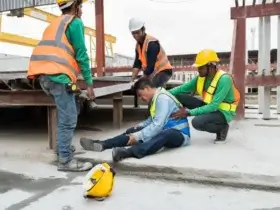If you can’t do what the Social Security Administration (SSA) calls “substantial gainful activity,” you may qualify for disability benefits. But certain people are much more likely to get denied because the SSA believes they can still do “sedentary work.” That’s because depending on your specific disability, you may still be able to do some work. In fact, many people can do some jobs sitting at a desk or at home in bed using a laptop. (This is also what most people imagine when they hear the phrase “sedentary work.”) However, proving your condition makes full-time sedentary work impossible is sometimes the only way you can get disability benefits.
How the SSA Defines Sedentary Work for Disability Applicants
The SSA lists five functional work levels for performing various jobs. On that list, the lowest level shown is sedentary work. The SSA defines sedentary work as:
- Lifting no more than 10 pounds at any given time
- Occasionally lifting or carrying items like office supplies, files, ledgers, packages and small tools
- Jobs that require you to stand or walk occasionally (in total, those activities should take up no more than two hours in an eight-hour workday)
Who’s Most Likely to Get Denied Benefits for This Particular Reason?
Depending on your job history, work skills and education, proving you cannot do sedentary work may be harder. That’s because the SSA assumes even if you can’t keep your old full-time job, you can still perform sit-down office work. If any of the following describes you, the SSA’s likely to deny your claim in favor of finding sedentary work:
- You already have a college degree or higher. The higher your education level is, the harder time you’ll have proving you can’t find sedentary work. That’s because a college degree alone qualifies you for more jobs than less-educated people applying for SSD benefits. But if there’s no sedentary work available in your area and you’re aged 50+, that may help your case.
- You’re younger than 50 years old. Since special vocational rules don’t apply to disability claimants under 50, your age alone may disqualify you. The SSA may feel you’re young enough to switch careers, move locations, get more training or go back to school. But once you’re aged 50-64, you’re closer to full retirement age and less likely to successfully make those changes.
- You have an invisible or hard-to-prove disability. In general, these disabilities are harder to obtain benefits for — sedentary work qualifications aside. (Invisible disabilities that often qualify for SSD include things like back pain, PTSD, depression and hearing loss. If your condition’s invisible, we getting a lawyer to file your claim. Filing on your own could add years of appealing in court to get the SSD benefits you’re rightfully owed!)
5 Ways to Prove You Cannot Do Sedentary Work According to SSA Guidelines
Even if the SSA already denied your claim for one of the reasons we listed above, don’t give up! It’s still possible to prove you cannot do sedentary work according to the SSA’s guidelines. Here are five tips that should help support your case when you appeal:
- Show you cannot stoop or bend over at all. For example: Drop a pencil to show the doctor you cannot pick it back up without help.
- Get a note from your doctor showing you must take turns sitting and standing all day. FYI, this is a common issue for deep-vein thrombosis (DVT) and pulmonary embolism (PE) patients. Or, show you need to prop one leg up periodically throughout the workday. Knee and hip surgery patients are more likely to have this requirement from their surgeons.
- Prove side effects from required prescriptions make it impossible for you to work. If your daily meds make it hard to stay awake, pay attention, or remember unwritten directions — tell the SSA that. If you’re on strong pain medication, muscle relaxants, or anti-seizure medications, this may also help prove your case. Nausea, dizziness, feeling sleepy at work and struggling to remember verbal directions can make sedentary work impossible to do.
- You require medical devices to move around freely/balance yourself while standing up — even on smooth, even surfaces. Mobility walkers, canes and crutches all count in the SSA’s eyes and help support your case.
- If your disability makes you miss two or more full workdays every month, mention this in your application. These include physical therapy, rehabilitation or similar medically necessary treatments your doctor prescribes for you.
Remember, these tips don’t guarantee the SSA will approve your claim. Still, knowing how to prove you can’t work in a sit-down office job may get your claim approved on appeal.
You May Qualify for Legal Assistance
Everyone’s condition is unique and limits their ability to work in different ways. The best way to get paid the most benefits the SSA owes you involves talking to a Social Security attorney. All disability lawyers work on contingency, so you’ll never pay for legal advice or help applying unless you win benefits. And if you do win SSD benefits, you’ll only pay a small, one-time fee.
Ready to see if you may qualify? Click the button below to start your free disability benefits evaluation online now.
Get Your Free Benefits Evaluation
Mandy Voisin is a freelance writer, blogger, and author of Girls of the Ocean and Star of Deliverance. As an accomplished content marketing consultant, mom of four and doctor's wife, Mandy has written hundreds of articles about dangerous drugs and medical devices, medical issues that impact disabled Americans, veterans' healthcare and workers' compensation issues since 2016.

















